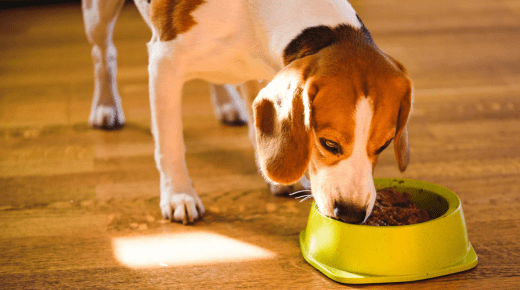1. Wheat Allergies in Dogs
Wheat allergies in dogs occur when their immune system overreacts to proteins found in wheat. This can lead to various uncomfortable symptoms that affect their skin, digestion, and overall well-being. Understanding these symptoms is crucial for effective management.
2. Understanding Allergies in Dogs
Allergies in dogs are immune responses to substances that are usually harmless. When a dog has a wheat allergy, their body identifies wheat proteins as threats, triggering a series of reactions to expel these proteins.
3. Common Symptoms of Wheat Allergy in Dogs
Common symptoms of wheat allergies in dogs include itching, skin rashes, ear infections, and gastrointestinal issues like diarrhea and vomiting. These symptoms can vary in severity depending on the individual dog’s sensitivity to wheat.
4. Itchy Skin and Scratching
Itchy skin is a primary symptom of wheat allergy in dogs. Dogs may scratch, bite, or lick their skin excessively, leading to redness, irritation, and even secondary infections due to the constant scratching.
5. Skin Rashes and Redness
Dogs with wheat allergies often develop skin rashes and redness, particularly on their belly, paws, and face. These rashes can be itchy and uncomfortable, causing the dog significant distress.
6. Ear Infections
Chronic ear infections are a common sign of wheat allergies in dogs. Symptoms include itching, redness, and a foul odor from the ears. Frequent head shaking and scratching at the ears are also indicative of ear infections.
7. Gastrointestinal Issues
Wheat allergies can cause gastrointestinal issues such as diarrhea, vomiting, and gas. Dogs may also experience bloating and abdominal discomfort, which can affect their appetite and overall health.
8. Chronic Diarrhea
Persistent diarrhea is a concerning symptom of wheat allergies in dogs. If your dog frequently has loose stools, it could be a sign of an adverse reaction to wheat in their diet.
9. Vomiting
Vomiting is another gastrointestinal symptom associated with wheat allergies in dogs. Repeated episodes of vomiting after eating could indicate an allergy to wheat or other ingredients in their food.
10. Hair Loss and Bald Patches
Excessive scratching and licking due to wheat allergies can lead to hair loss and bald patches. These areas are often red and inflamed, making the dog more susceptible to skin infections.
11. Hot Spots
Hot spots are localized areas of inflamed, infected skin that can occur due to constant scratching and licking. Wheat allergies can exacerbate the formation of hot spots, which require prompt treatment to prevent further complications.
12. Paw Licking and Chewing
Dogs with wheat allergies often lick and chew their paws excessively. This behavior is typically a response to itching and discomfort caused by the allergic reaction, leading to redness and irritation between the toes.
13. Secondary Skin Infections
Constant scratching and biting can cause secondary skin infections in dogs with wheat allergies. Bacterial and fungal infections can develop in the damaged skin, requiring veterinary treatment to resolve.
14. Behavioral Changes
Wheat allergies can cause behavioral changes in dogs due to discomfort and pain. Affected dogs may become more irritable, anxious, or lethargic, and they may also display reduced interest in activities they previously enjoyed.
15. Swollen Face and Paws
In some cases, wheat allergies can cause swelling in the face and paws. This swelling can be accompanied by itching and discomfort, and it often indicates a more severe allergic reaction.
16. Chronic Ear Itching
Persistent ear itching is a symptom of wheat allergies in dogs. If your dog frequently scratches their ears or shakes their head, it could be due to an underlying wheat allergy causing chronic irritation.
17. Excessive Shedding
Wheat allergies can lead to excessive shedding due to the constant scratching and skin irritation. If you notice your dog shedding more than usual, it might be time to consider a potential allergy.
18. Diagnosing Wheat Allergies
Diagnosing wheat allergies in dogs involves a thorough examination by a veterinarian. Allergy tests, such as blood tests or elimination diets, can help identify the specific allergen causing the symptoms.
19. Elimination Diets
An elimination diet involves removing all potential allergens from the dog’s diet and gradually reintroducing them one at a time. This helps pinpoint the exact cause of the allergy and confirms whether wheat is the culprit.
20. Allergy Testing
Allergy testing can be conducted by a veterinarian to identify specific allergens. Blood tests and intradermal skin tests are commonly used methods to determine if a dog is allergic to wheat.
21. Treatment Options for Wheat Allergies
Treating wheat allergies in dogs typically involves eliminating wheat from their diet. This may include switching to a grain-free dog food or a hypoallergenic diet recommended by your veterinarian.
22. Managing Symptoms
In addition to dietary changes, managing symptoms of wheat allergies in dogs may involve the use of antihistamines, anti-inflammatory medications, and topical treatments to relieve itching and inflammation.
23. Preventing Future Allergies
Preventing future allergic reactions involves maintaining a strict wheat-free diet and being vigilant about potential sources of wheat in treats and other foods. Regular veterinary check-ups can help monitor your dog’s condition and adjust their diet as needed.
24. Alternative Food Options
There are many alternative food options available for dogs with wheat allergies. Grain-free and hypoallergenic dog foods are formulated to avoid common allergens and provide balanced nutrition without triggering allergic reactions.
25. When to See a Veterinarian
If you suspect your dog has a wheat allergy, it is important to consult with a veterinarian. Prompt diagnosis and treatment can help manage symptoms effectively and improve your dog’s quality of life. Regular follow-ups will ensure your dog’s health is monitored and any necessary adjustments to their care are made.

